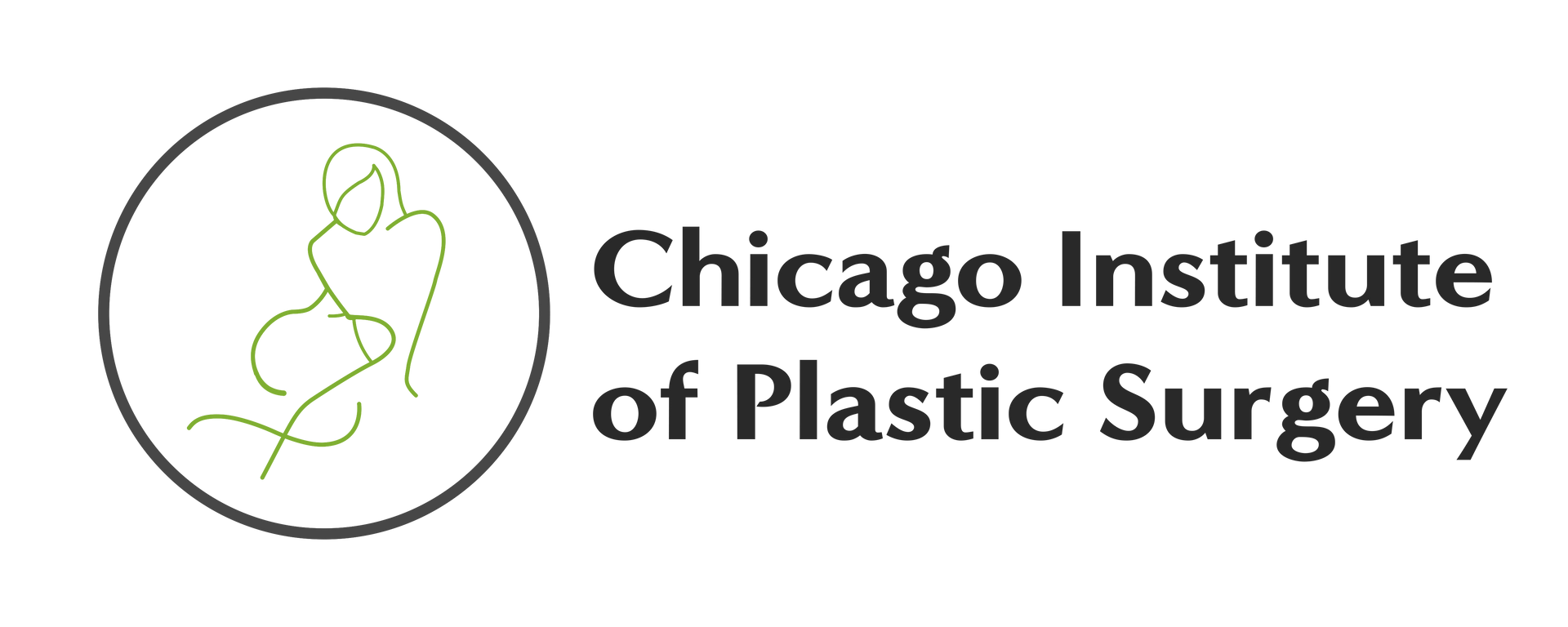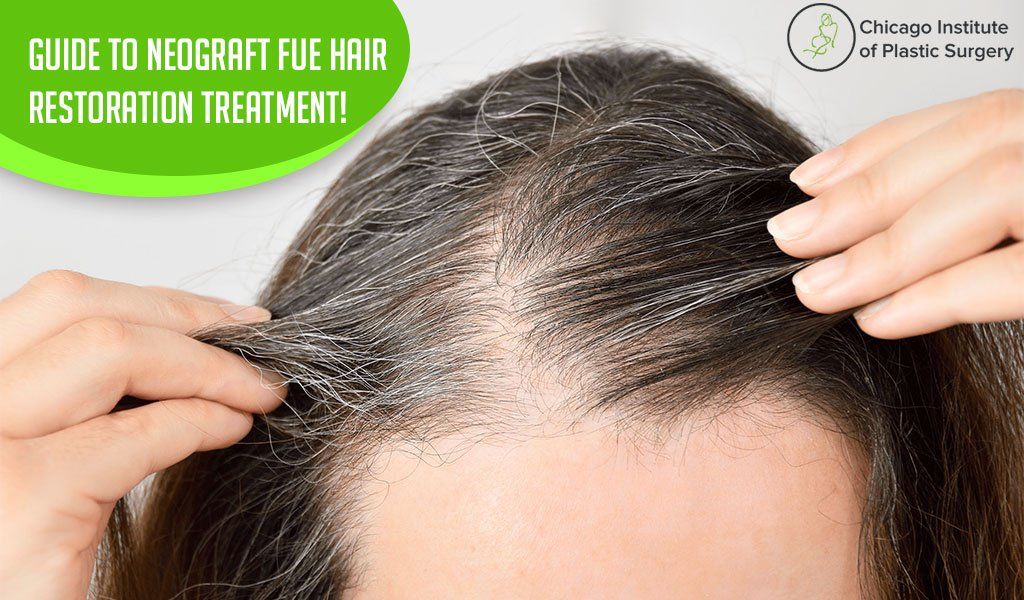Is NeoGraft FUE Hair Restoration Treatment in Chicago the Ultimate Solution?
Hair loss, confidence loss!
Don’t let your confidence recede with your hairline!
Learn how NeoGraft FUE hair transplantation can help restore your hairline.
Are you suffering from severe hair loss? Bald spots? If so, NeoGraft FUE is here to help restore your hair and confidence. Keep on reading to learn more about the NeoGraft treatment and its potential benefits.
There is no denying that FUE hair restoration can deliver amazing, natural and long-lasting results. However, many patients wonder how they expect their transplanted hair to look and feel in reality. At CI Plastic Surgery Clinic in Chicago , board-certified plastic surgeon and renowned hair restoration specialist Dr. Dhaval Patel is dedicated to helping patients achieve the most natural and reliable hair restoration results through NeoGraft FUE's advanced technology.
Learn more about NeoGraft hair restoration here, including how it works, the results you can achieve, and how this revolutionary procedure differs from other hair transplant methods.
NeoGraft Overview
If you have lost a lot of hair due to male pattern baldness, a hair transplant is one of the most effective ways to restore the fullness, and thickness of your previous hair.
Hair transplant treatment involves carefully removing DHT-resistant follicles from the back or sides of the head, then moving the follicles to areas of significant hair loss. Hair transplants can be used to fill in large areas without hair or to "grow back" bald spots.
A popular new hair transplant technology is NeoGraft®, a minimally invasive hair transplant technology designed to help you improve your hairline without the long scars, post-operative discomfort and long-term recovery of traditional hair.
On paper, NeoGraft looks much better than a conventional hair transplant. But is it really an excellent hair restoration option?
Below we have explained how hair transplant surgery works and how NeoGraft differs from older methods used to collect and move hair follicles.
We have also shared some other hair loss treatment options that you may want to consider, both as an alternative to hair transplant and as complementary treatments to help maintain thickness and density of your hair after surgery.
What is NeoGraft Hair Restoration?
The two best known and most preferred surgical procedures for hair transplantation are follicular unit transplantation (FUT) and follicular unit excision (FUE). Both methods provide natural looking hair and thanks to years of experience and techniques. They also have the potential to produce very aesthetically pleasing results.
NeoGraft hair restoration treatment is a semi-automatic version of the FUE method. The biggest advantage of the semi-automated method is that it eliminates some of the human error that can occur during surgical procedures.
It is currently touted as one of the most advanced hair transplant methods. Many experts also report that it is more effective than FUE hair transplant and other methods.
Potential Benefits
NeoGraft and other FUE hair transplant methods have several key advantages over traditional follicular unit transplant or FUT hair transplant.
- The first advantage of NeoGraft is that it is minimally invasive. Because the transplanted hair is removed in small quantities using a hand-held harvester, the procedure does not require any surgical staples. This less invasive method means that the recovery time after NeoGraft hair transplant surgery is generally shorter than that of more traditional FUT procedures. It also makes the process less uncomfortable. Most people who receive a NeoGraft hair transplant can return to normal activities within two weeks of surgery.
- Second, by implanting individual hair follicles or small groups of hair follicles, NeoGraft creates a natural hairline without the "cork" effect of old hair transplants. Performed by experienced surgeons, NeoGraft grafts look identical to the natural hairline.
- Third, as the donor hair follicles are collected in small clusters rather than strips of skin, the NeoGraft procedure leaves much less scarring than a traditional FUT hair transplant.
- Fourth, NeoGraft technology reduces trauma and minimizes damage to hair follicles during the extraction process. This helps to increase the survival rate of the transplanted hair for better density and coverage.
- Finally, while NeoGraft and FUE procedures are generally more expensive than older FUT hair transplant methods, they have become more affordable as FUE technology becomes more common.
Does NeoGraft Work?
When performed by a hair transplant surgeon in Chicago , a hair transplant using NeoGraft or other FUE technologies can help restore the hairline or add thickness to all hair. However, it is important to have realistic expectations about what is possible with NeoGraft and similar hair transplant methods.
While hair transplant surgery can restore hair around the hairline, in the center of the head, and on the crown, it does not interfere with the natural hair growth cycle, meaning it will not stimulate new hair growth.
Instead, individual follicles are transferred from the donor site (usually the back of the head) to the recipient sites affected by hair loss. This means that the total number of hair follicles after the procedure will remain the same, although in different places on the scalp.
If you already have extensive hair loss (for example, you have Norwood type 6 or 7 hair loss), even an extensive NeoGraft hair transplant may not restore enough hair along the hairline in the central part of the scalp and crown. You will need to discuss this with your hair restoration specialist or surgeon before proceeding with any hair transplant treatment.
Another thing to be aware of is that it is still possible to continue to lose hair after a hair transplant. Hair transplant surgery is not a miracle procedure, and if you are genetically prone to hair loss, you may continue to lose hair after hair transplant surgery. Although it is unlikely that the transplanted DHT-resistant hair will fall out during the procedure, men often continue to lose transplanted hair after this procedure.
To prevent further hair loss, your surgeon may recommend a hair loss medication, such as finasteride, minoxidil, or both, after surgery. Since male pattern baldness is not the only cause of hair loss, it is also important to maintain good habits after such procedures.
Simple things like getting a good night's sleep, limiting exposure to stressful situations, and a balanced diet rich in vitamins and minerals can help with hair growth and can help limit hair loss and keep hair thick, and healthy.
Who is a good candidate for NeoGraft hair restoration treatment?
NeoGraft and other types of hair transplant procedures can produce incredible results, but they are not for everyone. Good candidates for NeoGraft usually have a lot of donor hair on the back of the head and on the sides of the head.
In general, the less hair you lose along the hairline, mid-section, and/or crown, the better your hair transplant will be.
If you have moderate to severe hair loss, you may need to have more than one treatment to get the results you want. NeoGraft and other types of hair transplant surgeries can be performed on all types, textures and colors of hair. However, your hair type can affect the final aesthetic result.
How does the NeoGraft procedure work?
A hair transplant with NeoGraft usually takes 4 to 10 hours, although the exact time may vary depending on the total amount of hair transplanted, hair type, and other factors.
Before the procedure, the donor area of the scalp will be shaved. Your surgeon may suggest cutting your hair short before the procedure. This can help make any post-surgery changes to your hair less noticeable. During the procedure, the surgeon numbs the donor and recipient areas of the scalp with a local anesthetic.
You may be given a mild conscious sedative to reduce pain and allow you to relax throughout the procedure. NeoGraft is a minimally invasive procedure, which means that you may experience mild discomfort when the hair follicles are harvested and implanted.
It is normal to have a delicate scalp after surgery. Be sure to follow your hair transplant surgeon's instructions after surgery. You may need to use topical antiseptics, shampoos, and other products to keep the area clean and promote proper healing.
Since NeoGraft is a minimally invasive procedure, it requires minimal downtime. Most people can return to normal daily activities within two weeks after a NeoGraft hair transplant.
Is NeoGraft Worth It?
If you have enough hair follicles to make the procedure worth considering, NeoGraft can provide you with a thick, full and natural hairline. However, if you are almost completely bald, a hair transplant may not be worth it, even with the benefits that NeoGraft offers. When applied correctly, NeoGraft can facilitate positive effects on hair, improve self-confidence and overall appearance.
Take your first step towards feeling great!
Achieve a fuller and natural-looking head of hair with minimally invasive hair restoration solutions.
Have a look at the previous Article: Guide to Different Types of Lip Fillers & How to Choose the Right One/Filler for You?












